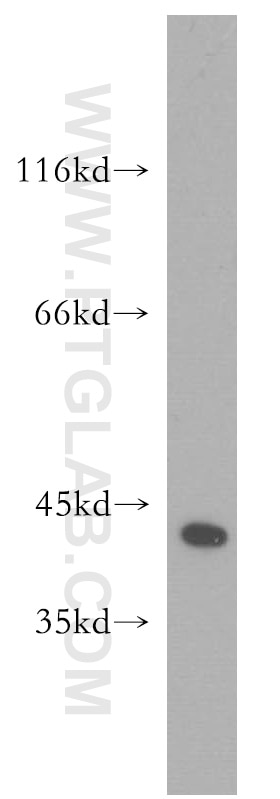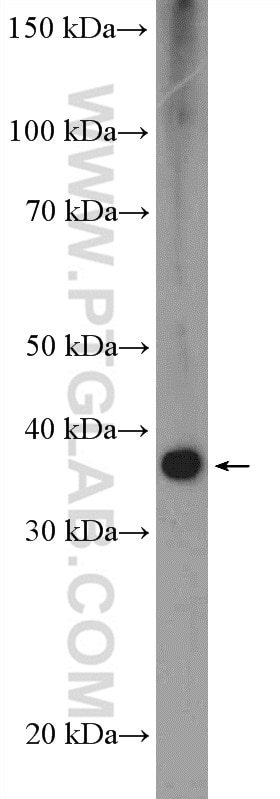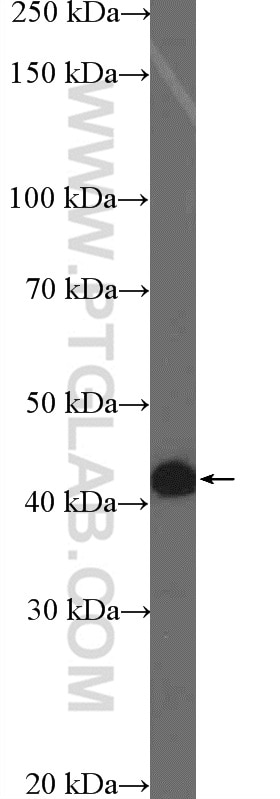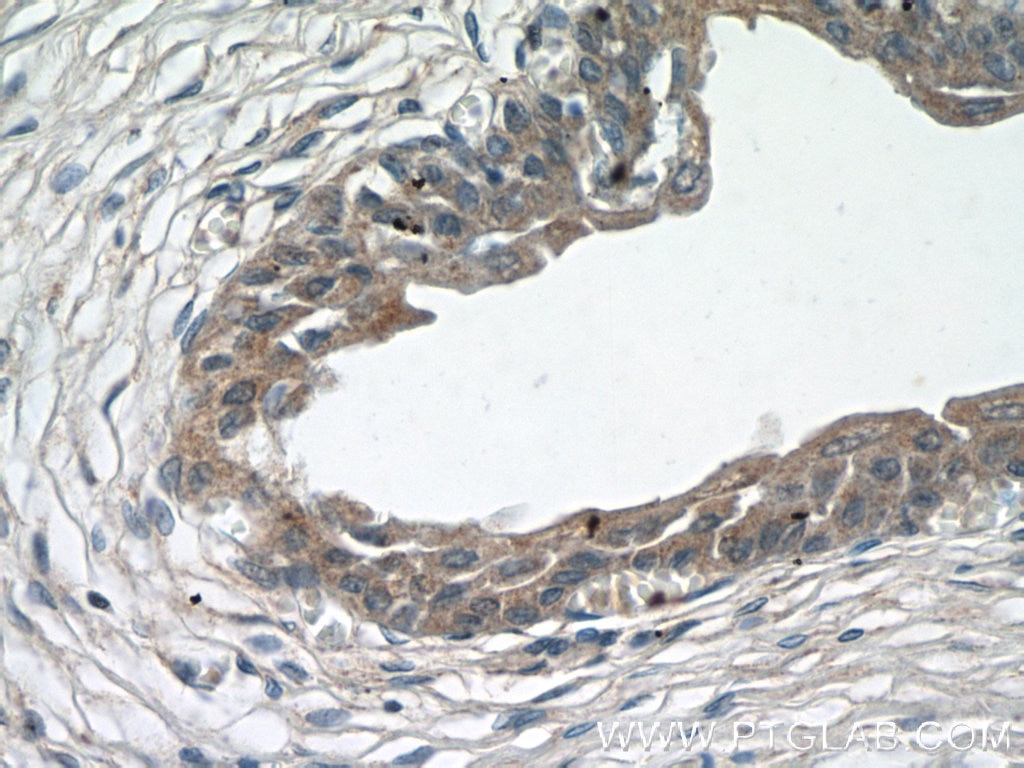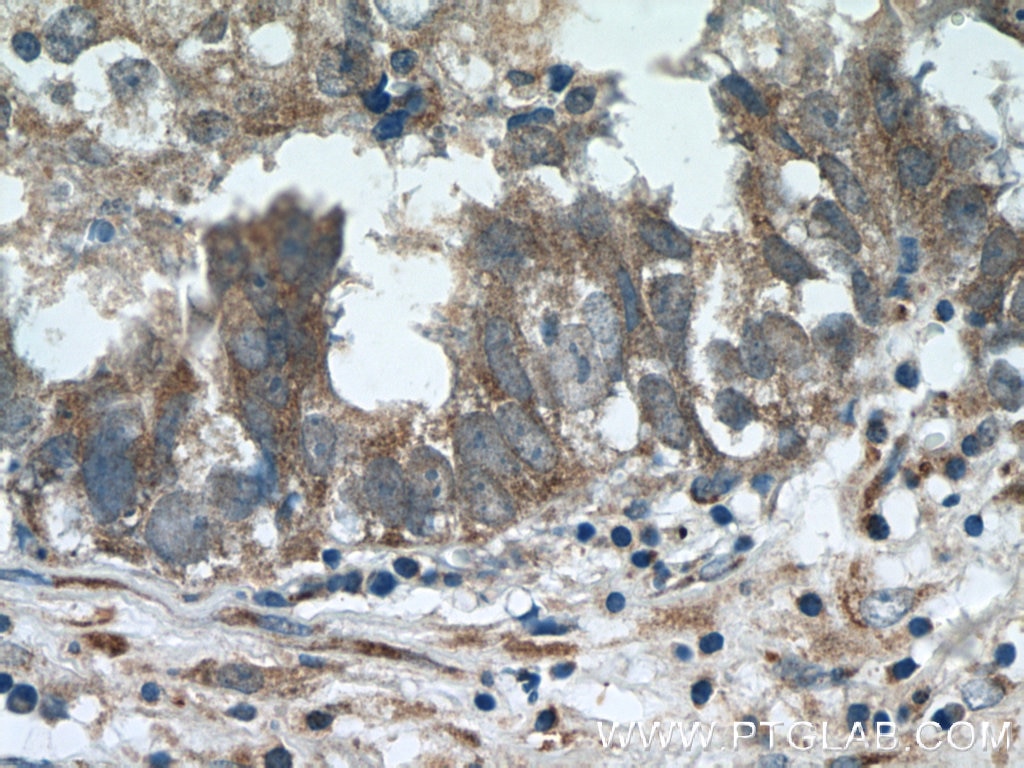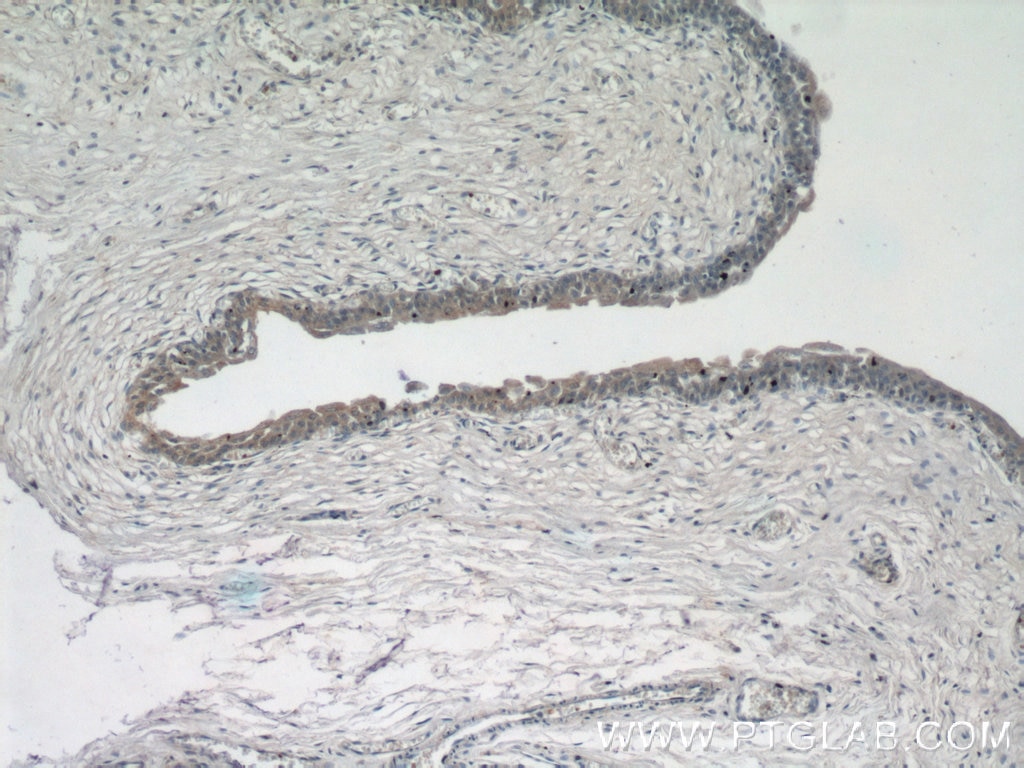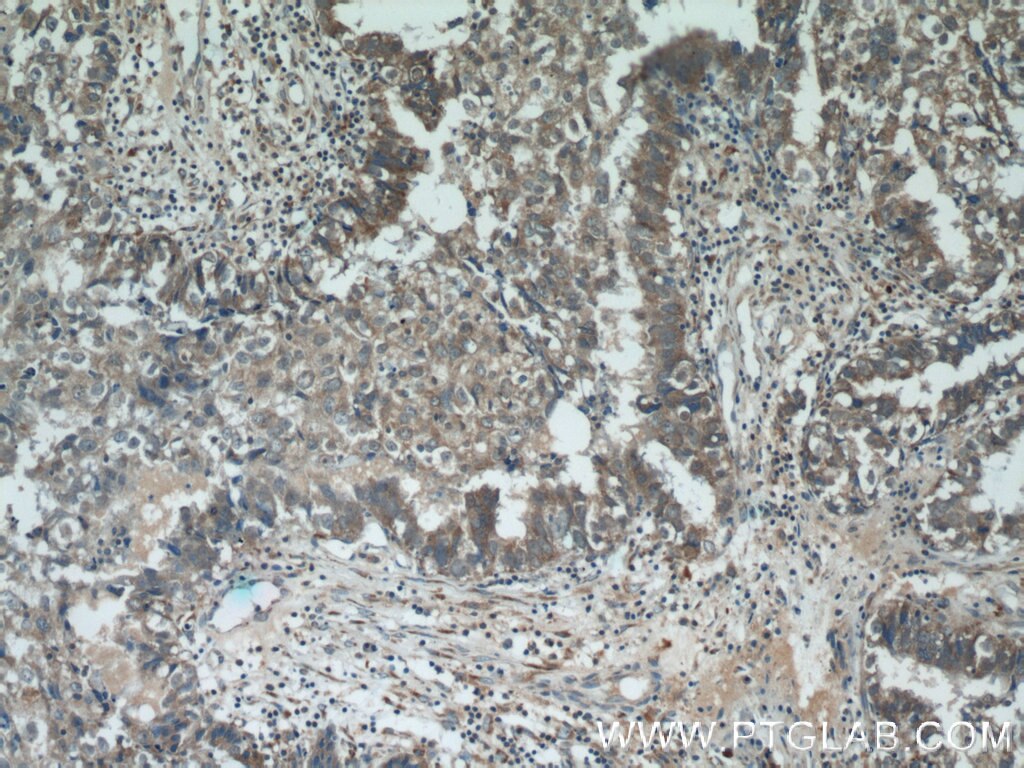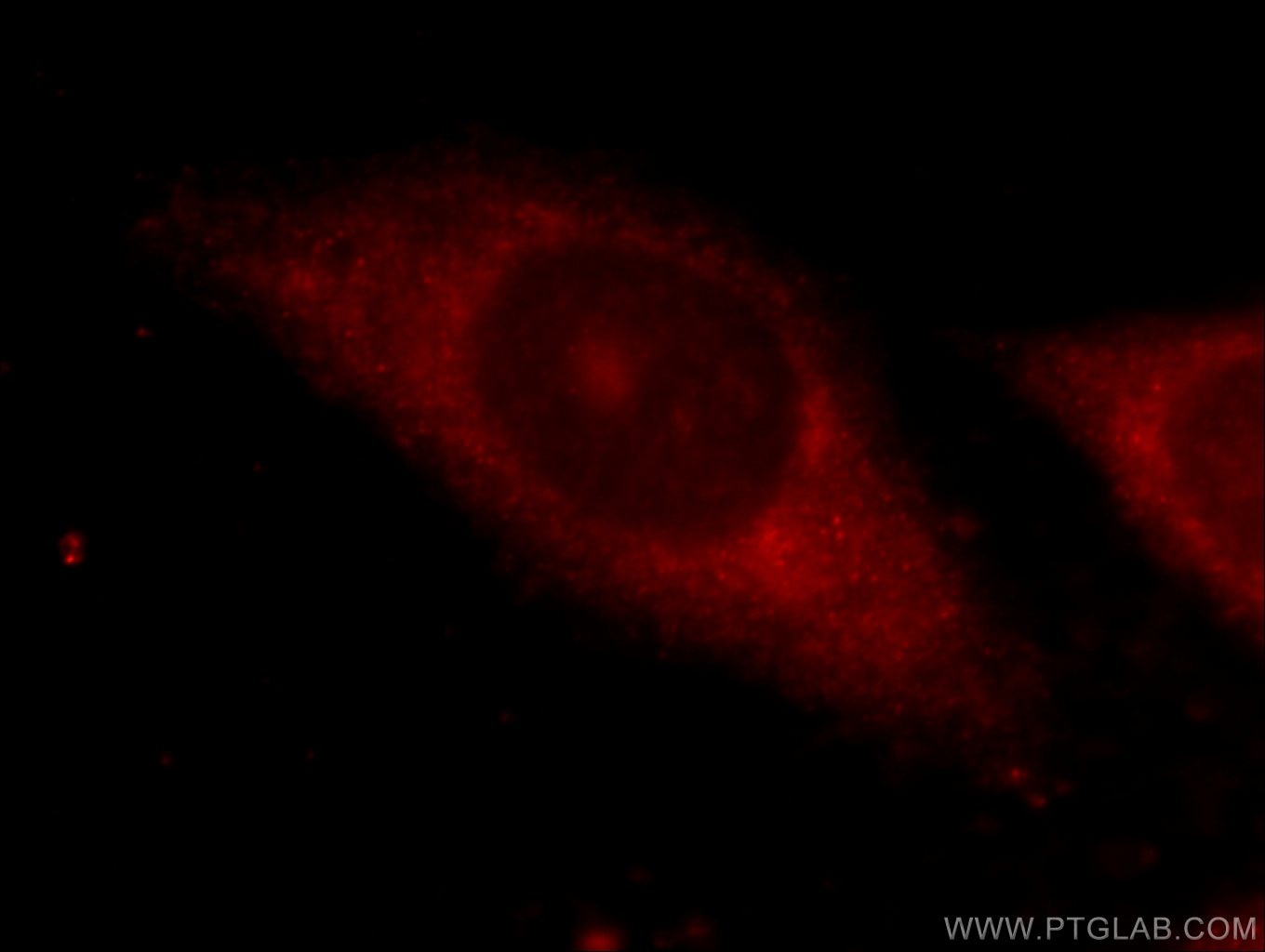ZFP36 Polyklonaler Antikörper
ZFP36 Polyklonal Antikörper für WB, IHC, IF/ICC, ELISA
Wirt / Isotyp
Kaninchen / IgG
Getestete Reaktivität
human, Maus, Ratte
Anwendung
WB, IHC, IF/ICC, CoIP, RIP, ELISA
Konjugation
Unkonjugiert
Kat-Nr. : 12737-1-AP
Synonyme
Galerie der Validierungsdaten
Geprüfte Anwendungen
| Erfolgreiche Detektion in WB | Mauslungengewebe, A549-Zellen |
| Erfolgreiche Detektion in IHC | humanes Mammakarzinomgewebe, humanes Blasengewebe Hinweis: Antigendemaskierung mit TE-Puffer pH 9,0 empfohlen. (*) Wahlweise kann die Antigendemaskierung auch mit Citratpuffer pH 6,0 erfolgen. |
| Erfolgreiche Detektion in IF/ICC | HepG2-Zellen |
Empfohlene Verdünnung
| Anwendung | Verdünnung |
|---|---|
| Western Blot (WB) | WB : 1:500-1:1000 |
| Immunhistochemie (IHC) | IHC : 1:20-1:200 |
| Immunfluoreszenz (IF)/ICC | IF/ICC : 1:10-1:100 |
| It is recommended that this reagent should be titrated in each testing system to obtain optimal results. | |
| Sample-dependent, check data in validation data gallery | |
Veröffentlichte Anwendungen
| WB | See 13 publications below |
| IHC | See 4 publications below |
| IF | See 3 publications below |
| CoIP | See 1 publications below |
| RIP | See 4 publications below |
Produktinformation
12737-1-AP bindet in WB, IHC, IF/ICC, CoIP, RIP, ELISA ZFP36 und zeigt Reaktivität mit human, Maus, Ratten
| Getestete Reaktivität | human, Maus, Ratte |
| In Publikationen genannte Reaktivität | human, Maus |
| Wirt / Isotyp | Kaninchen / IgG |
| Klonalität | Polyklonal |
| Typ | Antikörper |
| Immunogen | ZFP36 fusion protein Ag3461 |
| Vollständiger Name | zinc finger protein 36, C3H type, homolog (mouse) |
| Berechnetes Molekulargewicht | 326 aa, 34 kDa |
| Beobachtetes Molekulargewicht | 37-44 kDa |
| GenBank-Zugangsnummer | BC009693 |
| Gene symbol | ZFP36 |
| Gene ID (NCBI) | 7538 |
| Konjugation | Unkonjugiert |
| Form | Liquid |
| Reinigungsmethode | Antigen-Affinitätsreinigung |
| Lagerungspuffer | PBS mit 0.02% Natriumazid und 50% Glycerin pH 7.3. |
| Lagerungsbedingungen | Bei -20°C lagern. Nach dem Versand ein Jahr lang stabil Aliquotieren ist bei -20oC Lagerung nicht notwendig. 20ul Größen enthalten 0,1% BSA. |
Hintergrundinformationen
The expression of many cytokines is regulated post-transcriptionally by factors that modulate mRNA transport, translation, and stability. Much of this regulation occurs by the binding and stabilizing, or destabilizing, of cytokine mRNAs by proteins that recognize adenosine and uridine-rich elements (AREs) in untranslated regions of target transcripts. Zfp36 is a mRNA-binding protein involved in post-transcriptional regulation of AU-rich element (ARE)-containing mRNAs. It was demonstrated to physically interact with the p65 subunit of nuclear factor-κB leading to decreased nuclear import and diminished transcriptional activation mediated by nuclear factor-κB. It acted by specifically binding ARE-containing mRNAs and promoting their degradation, and has a crucial role in the post-transcriptional regulation of tumor necrosis factor (TNF). The calcualted molecular weight of ZFP36 is 34 kDa, but modified ZFP36 is about 40-45 kDa.
Protokolle
| Produktspezifische Protokolle | |
|---|---|
| WB protocol for ZFP36 antibody 12737-1-AP | Protokoll herunterladen |
| IHC protocol for ZFP36 antibody 12737-1-AP | Protokoll herunterladen |
| IF protocol for ZFP36 antibody 12737-1-AP | Protokoll herunterladen |
| Standard-Protokolle | |
|---|---|
| Klicken Sie hier, um unsere Standardprotokolle anzuzeigen |
Publikationen
| Species | Application | Title |
|---|---|---|
Mol Cell Multivalent Proteins Rapidly and Reversibly Phase-Separate upon Osmotic Cell Volume Change. | ||
Dev Cell N6-Adenosine Methylation of Socs1 mRNA Is Required to Sustain the Negative Feedback Control of Macrophage Activation. | ||
Proc Natl Acad Sci U S A Brf1 posttranscriptionally regulates pluripotency and differentiation responses downstream of Erk MAP kinase. | ||
Am J Physiol Cell Physiol Cancer associated fibroblasts suppressed ferroptosis in glioblastoma via upregulating lncRNA DLEU1 | ||
Sci Rep The Fragment HMGA2-sh-3p20 from HMGA2 mRNA 3'UTR Promotes the Growth of Hepatoma Cells by Upregulating HMGA2. | ||
Oncotarget Inhibition of COX2 enhances the chemosensitivity of dichloroacetate in cervical cancer cells. |
